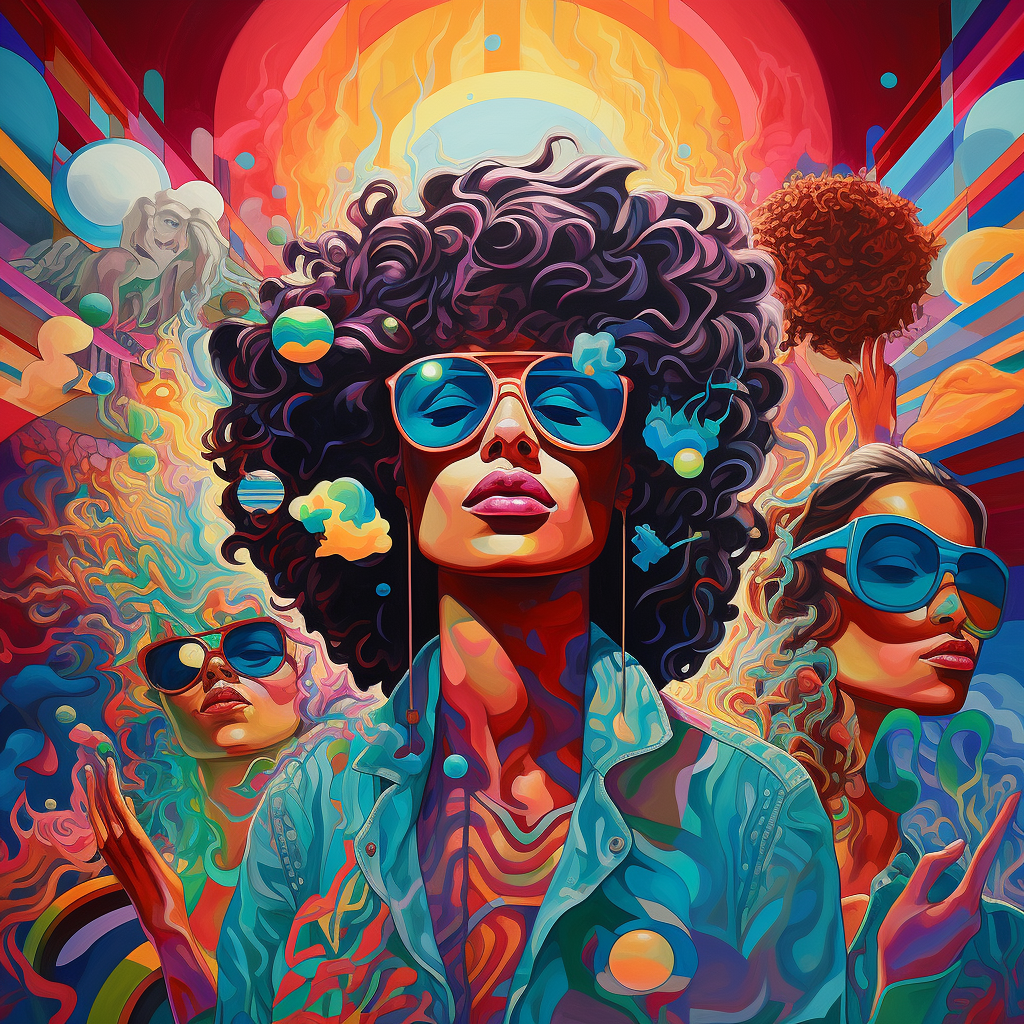We're in Beta 🙃
If it seems like people are talking about psychedelics and plant medicine, it’s because they are.
From daily microdosing of psilocybin mushrooms to facilitated ayahuasca trips, it’s not just marijuana that’s gone mainstream.
While these substances have been used for thousands of years by indigenous cultures, it is only in recent years that they've gained awareness and acceptance in the Western world for their potential to unlock new levels of healing, creativity, and personal growth.
Why Psychedelics Are Getting Noticed
Psychedelic therapy is showing great promise in the treatment of mental health issues like depression, anxiety, PTSD, and addiction.
Research suggests that certain substances can have profound and long-lasting effects on the brain1—promoting new neural connections, reducing symptoms of depression and anxiety, and even boosting creativity and productivity.
Many people who’ve had a profound experience describe it as “10 years of therapy in a single day.”
A rapidly increasing number of people, from celebrities to soccer moms to entrepreneurs, are turning to psychedelics and plant medicine to help them achieve their life goals and lead more fulfilling lives—unlocking creativity, deepening connection, and enhancing performance.
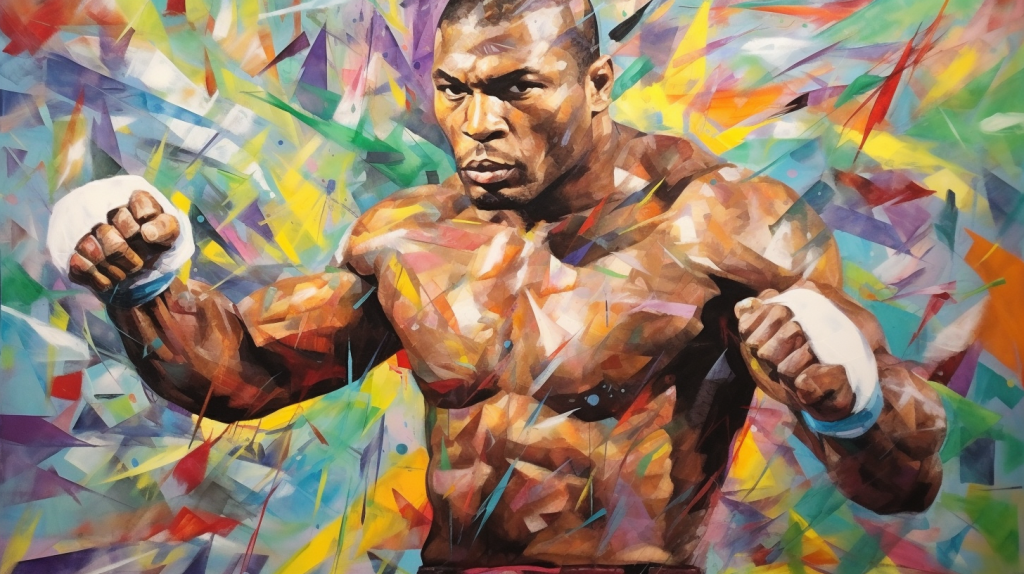
We're looking at you, Mike Tyson!
What Are Psychedelics?
Aren’t psychedelics just drugs?
There are different names and categories for psychedelics and the plants many are derived from (called "plant medicine" by indigenous peoples and ceremonial facilitators).
Here at Go Psychedelic, we define psychedelics as a class of substances that (at right dosages) can induce altered states of consciousness and affect perception, thoughts, and feelings—often resulting in profound psychological and spiritual experiences that can lead to long-lasting change.
"Psychedelics are a class of substances that (at right dosages) can induce altered states of consciousness and affect perception, thoughts, and feelings—often resulting in profound psychological and spiritual experiences that can lead to long-lasting change. "
![]()
The term "psychedelic" was first coined by British psychiatrist Humphry Osmond in the 1950s, who used it to describe substances like LSD and psilocybin that produced a "mind-manifesting" effect.
Another term that covers some of these psychoactive substances is “entheogens,” which literally means "generating the divine within.”
Traditionally used for spiritual or religious purposes to connect with a higher power or divine entity, substances such as ayahuasca can offer immense spiritual and transformative potential.
Meet the Psychedelic Substances
While not an exhaustive list, here are the most common psychedelic substances we will cover here on Go Psychedelic:
🍄 Psilocybin mushrooms ('Shrooms or Magic Mushrooms)
🦄 LSD (Acid)
Lysergic acid diethylamide, commonly known as LSD or Acid, is a potent hallucinogenic drug that profoundly alters perception, mood, and various cognitive processes. It's often associated with vivid hallucinations and sensory distortions.
🌿 Ayahuasca
😁 MDMA (Molly)
MDMA, also known as Molly or Ecstasy, is a synthetic drug known for its empathogenic and stimulant effects. It enhances feelings of emotional closeness and empathy, often used recreationally but also being studied for potential therapeutic applications.
😶🌫️ Ketamine
Ketamine is an anesthetic medication that, when used at sub-anesthetic doses, can induce hallucinations and dissociative effects. It's being investigated for its potential in treating various mental health conditions, including depression.
💚 Cannabis (Marijuana)
Cannabis, commonly referred to as marijuana, contains the psychoactive compound THC (tetrahydrocannabinol) that can induce altered perceptions, relaxation, and changes in mood. It's used both recreationally and for its potential medicinal properties.
🪽 DMT
Dimethyltryptamine (DMT) is a potent hallucinogenic compound naturally found in certain plants. When consumed, often through smoking or ingestion, it produces intense, short-lived psychedelic experiences characterized by vivid visions.
🧚 Iboga and Salvia Divinorum
Iboga is derived from the root bark of the iboga plant and contains the psychoactive compound ibogaine. Salvia divinorum is a psychoactive plant containing salvinorin A. Both substances induce powerful, short-lived hallucinogenic experiences.
🌵 Mescaline (Peyote and San Pedro)
Mescaline is a naturally occurring psychedelic compound found in various cacti, including peyote and San Pedro. These cacti have been used in indigenous rituals for their hallucinogenic effects, which often include altered perceptions and insights.
A Brief History of Psychedelics
While there’s been a recent surge of interest in and information about psychedelics and their many benefits, plant medicine has been around for thousands of years.
Indigenous Usage
Throughout history, indigenous people around the world have used substances like mushrooms, ayahuasca, and peyote for spiritual, medicinal, and shamanic purposes.
They recognized the power of certain plants and fungi to evoke profound experiences and insights that transcend everyday reality.
From the ayahuasca of Amazonian cultures to the peyote revered by many Native American tribes, the use of plant medicine is deeply rooted in spiritual practices and is believed to help people connect with the divine and gain profound insights.
Ancient Pre-History Peoples' Usage
Archeological evidence even verifies that these sacred substances have been used in communal and indigenous contexts, as well as in temples and religious contexts, for all of human history and pre-history2.
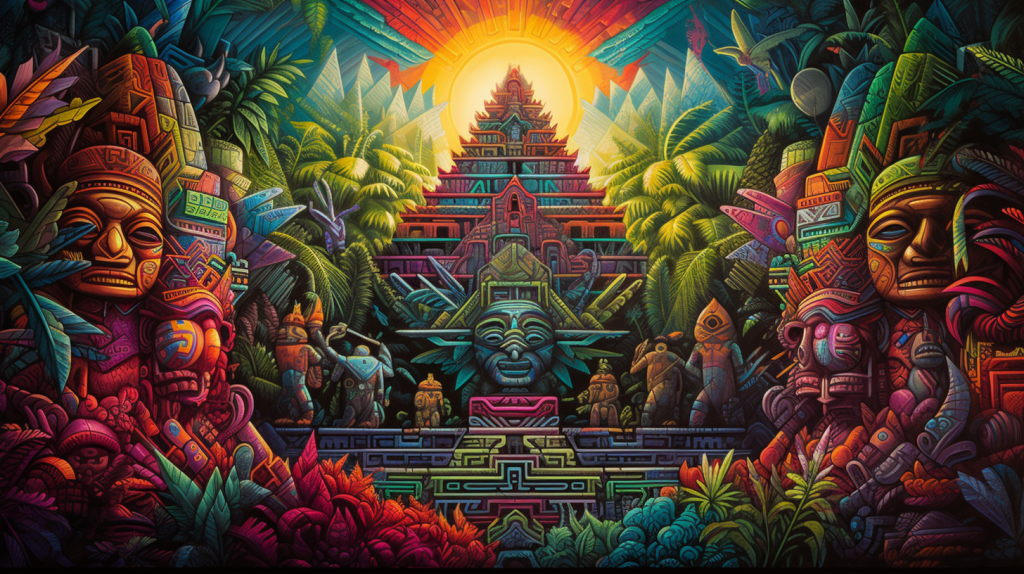
The Psychedelic Era
The modern history of psychedelics is far more dramatic... involving scientific discovery, cultural exploration, and government intervention.
In the 1950s through to the '70s, LSD and similar substances were widely researched as potential treatments for mental health disorders.
Over 1,000 studies involving 40,000 patients were conducted, with minimal adverse incidents reported3.
However, the counterculture movement of the 1960s embraced psychedelics as a way to challenge mainstream cultural norms and explore altered states of consciousness. This led to a backlash from the government, resulting in a ban on many of these substances.
The momentum came to a halt in 1970 with the passing of the Controlled Substances Act, which classified psychedelics as Schedule I drugs with a high potential for abuse and no recognized medical application.
Research into the clinical, therapeutic and creative potential of psychedelics was ended.
Our Present Psychedelic Renaissance
Today we are witnessing a psychedelic revolution.
A renewed interest in clinical research, medical applications, safe access, legalization, and psychedelics for therapy are bringing these substances back into the mainstream conversation.
Some of the most prestigious research institutions in the world have set up dedicated centers to study this. Johns Hopkins, Imperial College, UT Austin, and UC Berkeley just to name a few.
Dedicated psychedelic startups and non profits have also emerged. MAPS is a nonprofit organization that provides public resources and leadership as the world works together to create legal, evidence–based pathways to psychedelics.
The Benefits + Effects of Psychedelics
Psychedelic drugs are known to have profound effects by altering the normal activity of neurotransmitters in the brain, leading to changes in perception, mood, and cognition.
People use psychedelics for an ever-increasing range of goals and benefits, including:
Mental Health
Modern researchers are collecting overwhelming evidence for the benefits and effects of psychedelics for a wide host of mental illnesses and mood disorders, including anxiety, depression, treatment-resistant cases, suicidality, PTSD, and more4.
Trauma Recovery
Psychedelics, especially MDMA and psilocybin, have demonstrated profound potential in trauma healing5. These substances enable individuals to access and process deeply buried traumatic memories and emotions, often leading to substantial relief from conditions like PTSD. By altering the perception of these traumatic memories, psychedelics allow users to confront and integrate their past experiences in a therapeutic and supportive setting.
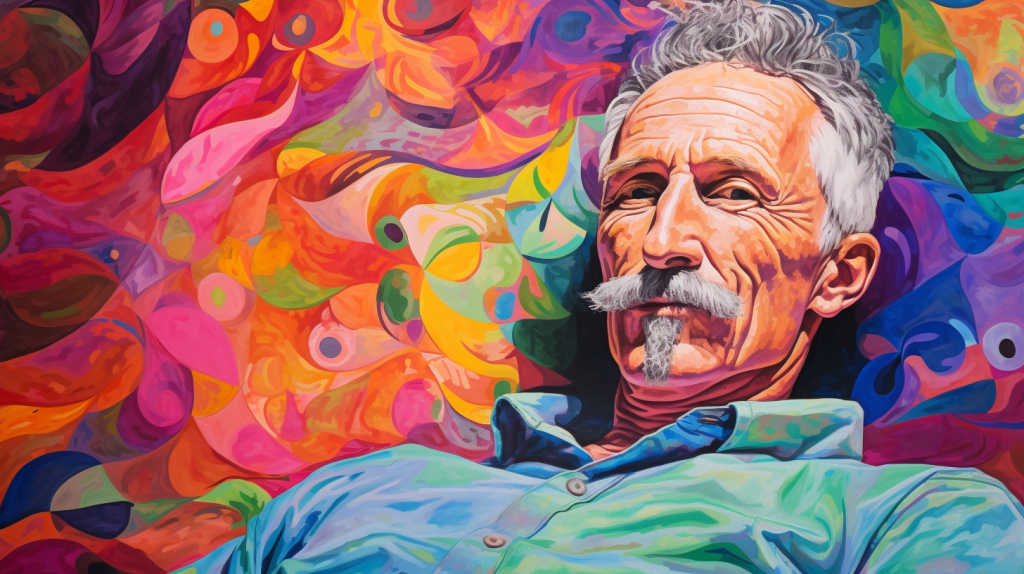
Addiction
Substances like ibogaine and ayahuasca have been used in addiction treatment due to their ability to induce intense self-reflection and disrupt addictive thought patterns6. Users often describe experiencing a "reset" of their addictive behaviors, allowing them to confront the root causes of their addiction and work towards recovery.
Cognition & Creativity
Psychedelics, such as psilocybin and LSD, have shown the remarkable ability to enhance cognitive function and foster creativity. These substances interact with the brain's serotonin receptors, leading to increased connectivity between different brain regions.
This study in Psychopharmacology, for example, showed increased creativity among participants who were microdosing mushrooms7. During the study, participants revealed they experienced more "out of the box" thinking after taking minuscule amounts of psilocybin.
Connection and Intimacy
Psychedelics can enhance interpersonal connections and intimacy. Substances like MDMA, known for its empathogenic effects, facilitate open and honest communication. Couples undergoing MDMA-assisted therapy have reported improved relationship satisfaction and increased emotional intimacy. This newfound connection often stems from the release of oxytocin, often referred to as the "love hormone," during MDMA experiences8.
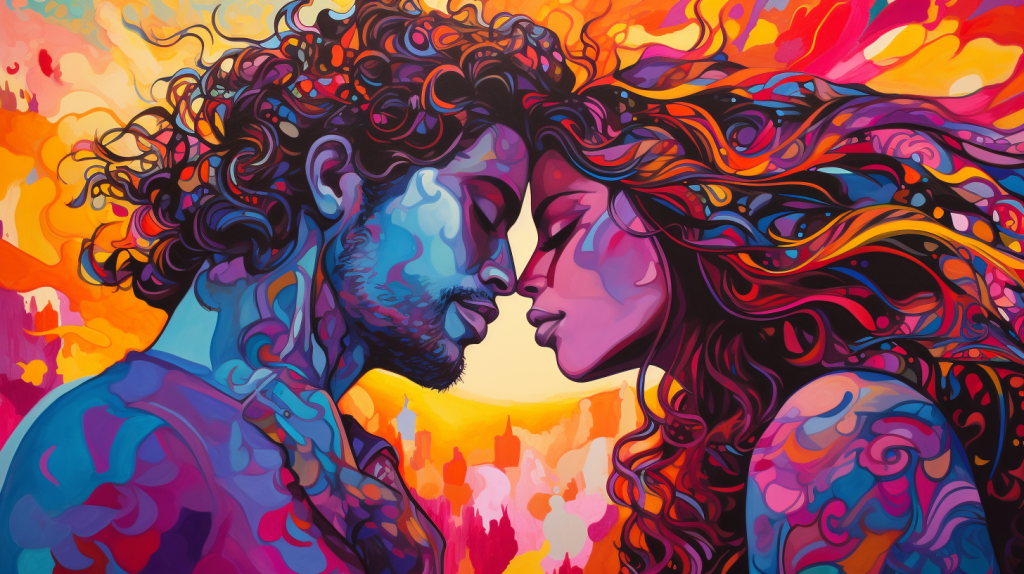
Sex and Relationships
Psychedelics can positively impact sexual experiences and relationships. In fact, researchers are beginning to consider why MDMA sex feels so good. “It feels like you're swimming in a pool of warm orgasmic water with someone else,” says Gabi Levi, a 26-year-old art director in New York City.
Some users report heightened sensations, increased intimacy, and enhanced communication with their partners during psychedelic experiences. MDMA, in particular, is known for its potential to improve sexual function and emotional closeness9. However, it's important to note that the effects of psychedelics on sex and relationships can vary widely between individuals.
Spiritual Exploration
Substances like ayahuasca and peyote have been used in indigenous and religious ceremonies for centuries to induce altered states of consciousness and to connect with spirits, the ancestors, the earth and the divine. Recent research suggests that our modern psychedelic raves also induce shamanic-like transcendent or spiritual experiences.
Between 66% and 86% of those who have psychedelic experiences in a supportive therapeutic setting consider them to be one of the five most meaningful and spiritually significant experiences of their lives10.
This study also considers the modern entheogenic usage of psychedelics for spiritual seeking11.
Personal Growth
Psychedelics can facilitate personal growth by promoting self-reflection and self-acceptance. The intense introspection that often accompanies a psychedelic journey can help individuals gain insights into their beliefs, values, and life goals. This can lead to a sense of personal transformation and growth, helping users navigate life with greater clarity and purpose.
This study on psychedelics for health behavior change explores the neurobiological effects of psychedelics like pscilocybin and how they could contribute to personal growth and behavioral change12.
Productivity and Work
Some individuals report increased productivity and creativity in their professional lives after psychedelic experiences. Psychedelics may help individuals break free from creative ruts and enhance problem-solving skills.
Microdosing, a practice involving the consumption of small, sub-perceptual doses of psychedelics, is gaining popularity among professionals who seek these cognitive benefits without the psychedelic experience's intensity.
Parenting
Psychedelics can offer parents a unique perspective on their roles and relationships with their children. Users have reported increased patience, empathy, and the ability to connect more deeply with their children after psychedelic experiences. More and more parents are also speaking out about the benefits of microdosing for managing the stress of parenting and of life in general.
A note on the risks...
While it is important to note that the side effects of psychedelic substances (especially at high doses) can be intense or even trigger a 'bad trip'... they have the potential to be transformative and life-changing for those who use them in a safe and responsible manner.
With proper preparation and guidance, one can have profound experiences to help overcome personal challenges, gain new insights, and find a deeper sense of purpose and connection.
Are Psychedelics Legal?
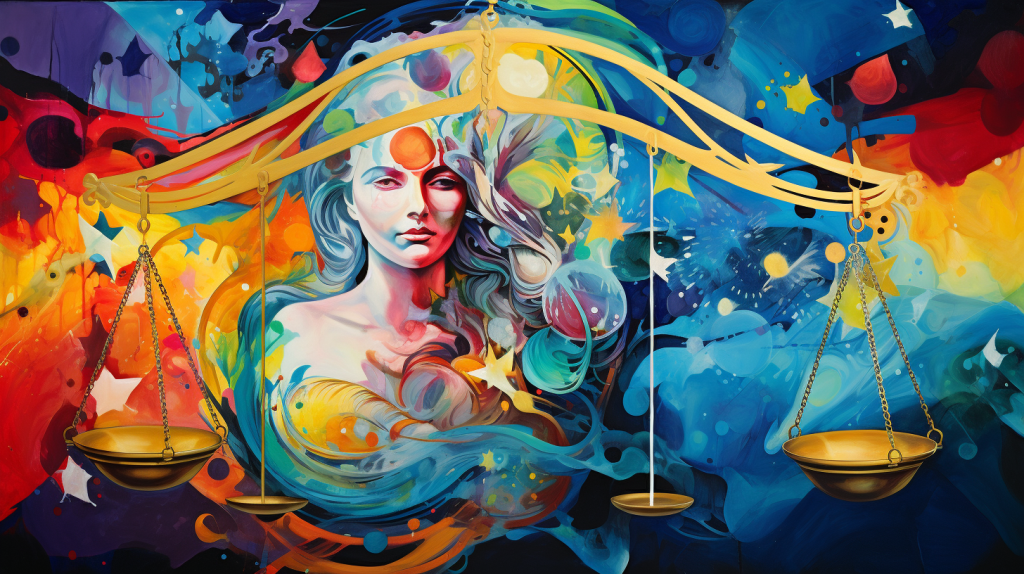
Legalization of psychedelics and plant medicine varies depending on the substance and the location.
In many countries, substances like psilocybin mushrooms, LSD, and mescaline are classified as Schedule I drugs, meaning they are illegal and not recognized for any medical use.
However, there are some countries, such as the Netherlands and Portugal, where some of these substances are decriminalized or allowed for certain religious or cultural use.
In the United States, the tides are turning for psychedelic medicines.
The legalization of psychedelics varies depending on the substance and the specific context of use.
Cannabis has been legalized for medical or recreational use in most states, but it still remains illegal under federal law. Some states and cities have decriminalized or legalized certain substances for personal use, medical research, or both.
The decriminalization of certain psychedelics has already taken place in Oregon, Washington D.C., and multiple cities across California and Massachusetts.
In other states, such as Connecticut, Missouri, and Texas, measures have been proposed or passed to explore the medicinal uses of certain substances such as psilocybin or MDMA.
Ayahuasca and peyote are illegal under federal law, but are used in some religious ceremonies with certain legal protections.
FDA Designations For Psychedelics
In recent years, there has been a growing interest in the therapeutic potential of psychedelic drugs, leading to increased clinical research and trials and interest in psychedelic therapy.
In the United States, for example, the FDA has granted "Breakthrough Therapy" designation for psilocybin in the treatment of depression, paving the way for expedited development and review of this potential treatment.
Similarly, MDMA has been granted "Breakthrough Therapy" designation for PTSD treatment.
Both ketamine and MDMA have been approved by the FDA for certain medical treatments, and are legally available through licensed clinics. LSD remains illegal under federal law, but some clinical trials are underway to study its potential therapeutic uses.
See this Time.com article for more information on the above FDA designations.
Please note that the legal status of these substances may vary depending on state and local laws, and that this information may change over time.
It's important to do your own research and consult with legal and medical professionals before using any substance.
Psychedelic Legalization: A Current Snapshot
|
Substance |
Legal Status (US) |
Legal Status (Cities/States) |
|
Cannabis |
Legal for medical and/or recreational use in many states |
Legal for medical use in 36 states. Legal for recreational use in 15 states and Washington D.C.. (February 2023.) |
|
Psilocybin |
Illegal at the federal level, decriminalized in some cities |
Decriminalized in Denver, Oakland, Santa Cruz, Ann Arbor |
|
MDMA |
Illegal at the federal level, undergoing clinical trials for PTSD treatment |
Decriminalized in Oakland and Santa Cruz |
|
Ketamine |
Legal for medical use, often used off-label for depression and anxiety |
Legal for medical use in all states |
|
LSD |
Illegal at the federal level |
Decriminalized in Oakland, Santa Cruz, Ann Arbor |
|
Ayahuasca |
Illegal in the US |
Legal for religious purposes in some cases |
|
Peyote |
Illegal in most cases, legal for religious use by members of the Native American Church |
Legal for religious use in Arizona, New Mexico, Texas, and other states with significant Native American populations |
|
Ibogaine |
Illegal in the US |
Legal for medical use in some countries outside the US |
Note: This chart is not comprehensive and the legal status of these substances may change. It is important to research the laws in your area before using any substances. (Up-to-date information on the decriminalization measures across the US is available at the Psilocybin Alpha Tracker.)
FAQ
Are psychedelics safe to use?
he safety of using psychedelics depends on several factors, including the specific substance, dosage, setting, and individual health considerations. Research has demonstrated that many psychedelics, such as psilocybin (found in magic mushrooms) and LSD, have relatively low toxicity levels and are not physically addictive.
Psychedelics should be used under the guidance of experienced professionals in a controlled and supportive environment to mitigate these risks. Additionally, the legal status of psychedelics varies widely by country, and possession or use may be subject to legal consequences.
What is a psychedelic experience like?
A psychedelic experience is characterized by profound alterations in perception, thoughts, emotions, and sensory experiences. These alterations often include vivid and intense visual hallucinations, changes in the perception of time, and a deep sense of interconnectedness with one's surroundings or the universe.
Users may also report heightened creativity, introspection, and introspective thoughts. The specific nature of a psychedelic experience can vary widely depending on the substance used (e.g., LSD, psilocybin, or DMT), the dosage, and the individual's mental and emotional state.
Which psychedelic is good for a first-time beginner?
For first-time beginners considering a psychedelic experience, psilocybin mushrooms and LSD (lysergic acid diethylamide) are often considered suitable options due to their relatively shorter durations and milder effects when compared to other psychedelics.
However, more important than the substance is ensuring that you prepare, engage and integrate your psychedelic journey, which we will cover at length over time on this website.
TABLE OF CONTENTS
Why Psychedelics Are Getting Noticed
What Are Psychedelics?
Meet the Psychedelic Substances
A Brief History of Psychedelics
The Benefits + Effects of Psychedelics
Are Psychedelics Legal?
FAQ
REFERENCES
1. Castelhano, João et al. "The Effects of Tryptamine Psychedelics in the Brain: A Meta-Analysis of Functional and Review of Molecular Imaging Studies." Frontiers in Pharmacology, vol. 12, 2021.
2. Samorini, Giorgio. "The oldest archeological data evidencing the relationship of Homo sapiens with psychoactive plants: A worldwide overview". Journal of Psychedelic Studies 3.2 (2019): 63-80.
3. DiPaolo M. LSD and The Hippies: A Focused Analysis of Criminalization and Persecution in The Sixties. PIT Journal. 2018.
4. Castelhano, João, et al. "The Effects of Tryptamine Psychedelics in the Brain: A Meta-Analysis of Functional and Review of Molecular Imaging Studies." Frontiers in Pharmacology, vol. 12, 2021.
5. Elsouri, Kawther N et al. “Psychoactive Drugs in the Management of Post Traumatic Stress Disorder: A Promising New Horizon.” Cureus vol. 14,5 e25235. 23 May. 2022
6. Winkelman, Michael. “Psychedelics as medicines for substance abuse rehabilitation: evaluating treatments with LSD, Peyote, Ibogaine and Ayahuasca.” Current drug abuse reviews vol. 7,2 (2014): 101-16.
7. Prochazkova, Luisa et al. “Exploring the effect of microdosing psychedelics on creativity in an open-label natural setting.” Psychopharmacology vol. 235,12 (2018): 3401-3413.
8. Kirkpatrick, Matthew G et al. “Effects of MDMA and Intranasal oxytocin on social and emotional processing.” Neuropsychopharmacology : official publication of the American College of Neuropsychopharmacology vol. 39,7 (2014): 1654-63.
9. McElrath, Karen. “MDMA and sexual behavior: ecstasy users' perceptions about sexuality and sexual risk.” Substance use & misuse vol. 40,9-10 (2005): 1461-77.
10. Hartogsohn, Ido. "The Meaning-Enhancing Properties of Psychedelics and Their Mediator Role in Psychedelic Therapy, Spirituality, and Creativity." Frontiers in Neuroscience, vol. 12, 2018.
11. St. Arnaud, Kevin O., and Donald Sharpe. "Entheogens and spiritual seeking: The quest for self-transcendence, psychological well-being, and psychospiritual growth". Journal of Psychedelic Studies 7.1 (2023): 69-79.
12. Teixeira, Pedro J et al. “Psychedelics and health behaviour change.” Journal of psychopharmacology (Oxford, England) vol. 36,1 (2022): 12-19.

